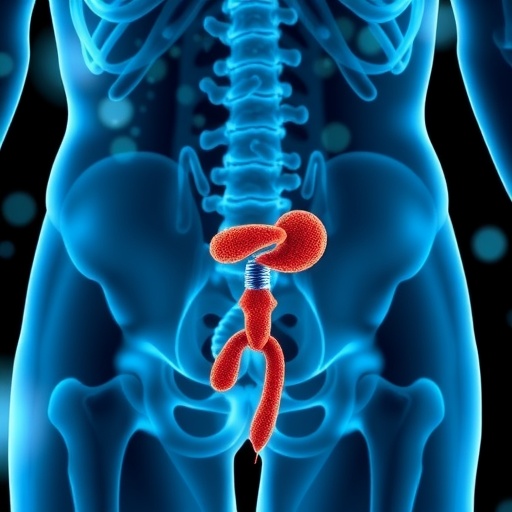Interstitial cystitis/bladder pain syndrome (IC/BPS) is a complex and often poorly understood condition that affects millions of people worldwide. Characterized by bladder discomfort and a myriad of lower urinary tract symptoms, IC/BPS poses significant challenges for both patients and healthcare providers. The intricate nature of the symptoms can lead to misdiagnosis or inappropriate treatments, which can either exacerbate the patient’s plight or leave them inadequately managed. This conundrum highlights the urgent need for improved diagnostic tools and a deeper understanding of the underlying mechanisms that drive this condition.
Despite ongoing research, the pathophysiology of IC/BPS remains enigmatic, with multiple hypotheses attempting to elucidate its origin and progression. Autoimmune inflammation is one potential contributor to the condition. Inflammation could potentially disrupt normal bladder function and contribute to the chronic pain experienced by patients. Other theories point to oxidative stress as a significant factor, suggesting that an imbalance between free radicals and antioxidants may play a role in bladder wall damage. Additionally, dysfunction of the urothelium—the bladder’s protective lining—has been implicated, indicating that issues at the cellular level may lead to the threshold for pain being lowered, thus amplifying discomfort.
In the face of such complexities, a diverse array of urinary biomarkers has surfaced in recent years. These biomarkers offer promise for improving diagnostic precision, yet their reliability has been questioned. The variability in patient presentations further complicates the efforts; what works for one individual may not hold true for another. Consequently, this inconsistency hinders the development of standardized testing protocols that could streamline the diagnostic process and lead to targeted therapies.
As technological advancements continue to shape the landscape of medical diagnostics, biomarkers are increasingly moving toward multiplex assays. This evolution encompasses a set of innovative platforms that collectively analyze genomic, transcriptomic, proteomic, and cellular data. These methods provide a holistic approach to uncovering the complex interplay of biological markers associated with IC/BPS. However, despite the advancements in technology, many of the cutting-edge research findings have yet to be clinically validated, leaving a significant gap between research and practical applications in patient care.
One promising avenue for research is the Multidisciplinary Approach to the Study of Chronic Pelvic Pain Research Network (MAPP). The insights gained from studying clinical phenotypes within this network may bolster multi-level biomarker research. This endeavor aims to integrate various modalities, including molecular biomarker analysis, advanced imaging techniques, and other diagnostic methods, to enhance the accuracy of IC/BPS diagnoses. By harnessing this collective knowledge, researchers hope to untangle the complexity of symptoms and associated biomarkers, paving the way for targeted diagnostic and treatment strategies.
It is crucial to recognize that successfully treating IC/BPS requires a comprehensive understanding of each patient’s unique clinical picture. Personalized medicine, a tailoring of medical treatment to the individual characteristics of each patient, is becoming increasingly vital in the field of urology, particularly for chronic conditions such as IC/BPS. By integrating multi-dimensional data obtained from various biomarker analyses within a personalized framework, physicians can work towards developing treatment plans that address both the physiological and experiential aspects of the illness.
Research around IC/BPS is not merely an academic pursuit; it has real-world implications that affect the daily lives of countless individuals. The pain, discomfort, and frequent need for urination can severely impact a patient’s quality of life. As more is understood about the biological underpinnings of the condition, healthcare providers stand to gain the tools necessary to manage symptoms more effectively and improve the overall patient experience.
Patients have long called for a more nuanced approach to treatment, one that considers the full range of symptoms they experience. Currently, treatment options vary widely, from dietary changes and physical therapy to pharmaceuticals and, in some cases, surgery. However, the diversity of symptoms means that no single treatment approach may be effective for everyone. With the advent of biomarker-driven precision medicine, there is hope that tailored treatments will become the standard of care, changing how IC/BPS is managed.
The integration of new biomarkers, along with the insights gained from examining the various potential mechanisms behind IC/BPS, represents a new frontier in urological research. As scientists delve deeper, there is a collective optimism that breakthroughs will emerge, ushering in a new era of diagnostics and treatment options. These advancements may help clarify the often blurry lines between different chronic pelvic pain syndromes, leading to more accurate diagnoses and effective management strategies.
Furthermore, the importance of community support and patient advocacy in advancing research cannot be overstated. Engaging affected individuals in research initiatives fosters a collaborative environment that can yield valuable insights for both patients and researchers. By sharing their experiences and feedback, patients become integral members of the research process, driving home the message that personal narratives are critical in shaping practical applications for new scientific knowledge.
The pressing need for innovative solutions in the management of IC/BPS cannot be ignored. As researchers work diligently to uncover promising biomarkers and develop influential studies, the patient community remains hopeful for breakthroughs that will lead to more effective diagnostic tools and treatment modalities. Each step forward in this field represents a victory for those living with the chronic discomfort of IC/BPS.
In conclusion, IC/BPS poses a multifaceted challenge that requires a concerted effort from the medical community to untangle its complexities. Achieving more precise diagnostic capabilities through the exploration of urinary biomarkers and integrating multi-level research findings is not only an ambitious goal but a necessity for improving the management of this condition. By advancing our understanding and honing our diagnostic resources, healthcare providers can enhance the quality of life for many who suffer from this often debilitating syndrome.
Subject of Research: Interstitial cystitis/bladder pain syndrome (IC/BPS)
Article Title: Exploring promising biomarkers based on pathogenic mechanisms in interstitial cystitis/bladder pain syndrome.
Article References:
Xin, K., Wu, S., Li, R. et al. Exploring promising biomarkers based on pathogenic mechanisms in interstitial cystitis/bladder pain syndrome.
Nat Rev Urol (2025). https://doi.org/10.1038/s41585-025-01078-8
Image Credits: AI Generated
DOI: 10.1038/s41585-025-01078-8
Keywords: interstitial cystitis, bladder pain syndrome, urinary biomarkers, precision medicine, chronic pelvic pain




